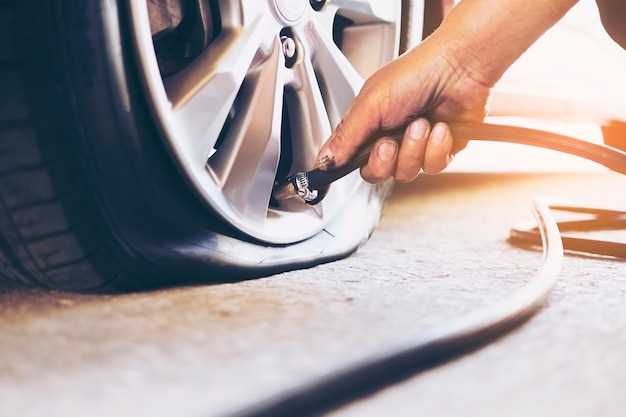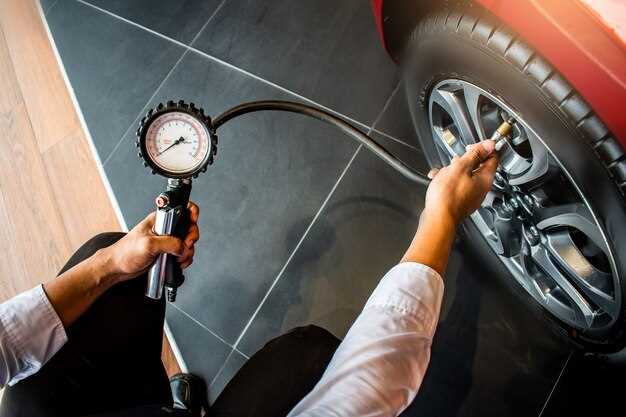
The importance of regularly checking your tire pressure cannot be overstated. Properly inflated tires contribute significantly to vehicle safety, fuel efficiency, and tire longevity. Under-inflated tires can lead to increased wear, reduced handling capabilities, and affected braking performance. Conversely, over-inflated tires may result in a harsher ride and decreased traction, particularly in adverse weather conditions.
The concept of tire pressure refers to the amount of air within a tire, measured in pounds per square inch (PSI). Each vehicle typically has a manufacturer’s recommended pressure, found in the owner’s manual or on a sticker inside the driver’s side door. Adhering to these recommendations is crucial for optimal performance and safety.
In this article, we will guide you through the essential steps to correctly check your tire pressure. By establishing a routine for monitoring tire pressure, you’ll not only enhance your driving experience but also extend the life of your tires. Following these simple instructions will ensure that your vehicle operates safely and efficiently on the road.
Selecting the Right Tire Pressure Gauge for Accurate Readings

Choosing the appropriate tire pressure gauge is crucial for ensuring accurate readings and maintaining optimal tire performance. Here are important factors to consider when selecting a gauge:
- Gauge Type: There are several types of tire pressure gauges available, including analog, digital, and dial gauges. Each type has its advantages:
- Analog Gauges: These use a needle and dial to display pressure. They are usually inexpensive and do not require batteries.
- Digital Gauges: These provide a digital readout, often with higher precision and easier readability. Many come with additional features like backlighting or automatic shut-off.
- Dial Gauges: Similar to analog but often designed for heavy-duty usage. They can be more reliable under tough conditions.
- Measurement Range: Ensure the gauge can measure the pressure range suitable for your vehicle’s tires, typically between 0 to 60 psi for passenger vehicles.
- Accuracy: Look for gauges that advertise high accuracy, usually within ±1 psi. Accurate measurements are vital for tire safety and performance.
- Ease of Use: Select a gauge that is comfortable to hold and easy to read. Features such as a rotating display can help check pressure from different angles.
- Durability: Opt for models made from high-quality materials that can withstand wear and tear, especially if you plan to use them frequently.
- Calibration: It’s essential to choose a gauge that can be easily calibrated, ensuring that it remains accurate over time.
By carefully considering these factors, you can select a tire pressure gauge that meets your needs, ensuring you achieve precise tire pressure readings for optimal vehicle performance.
Step-by-Step Guide to Checking Tire Pressure Safely
Checking your tire pressure is essential for safe driving and optimal vehicle performance. Follow these steps to ensure you do it correctly:
1. Ensure your vehicle is parked on a level surface. This will give you an accurate reading of the tire pressure.
2. Gather the necessary tools: a tire pressure gauge and, if needed, an air compressor. A digital gauge provides precise readings while a manual gauge is simple to use.
3. Remove the valve cap from the tire you wish to check. Keep it in a safe place to avoid losing it.
4. Firmly press the tire pressure gauge onto the valve stem. Ensure a tight seal to prevent air from escaping while measuring.
5. Read the measurement displayed on the gauge. Compare it against the manufacturer’s recommended tire pressure, which can usually be found on a sticker inside the driver’s door or in the vehicle’s manual.
6. If the tire pressure is too low, use an air compressor to add air until you reach the optimal level. If it’s too high, release some air by pressing the valve stem carefully.
7. Once you have achieved the correct pressure, replace the valve cap securely to maintain the integrity of the tire.
8. Repeat the process for each tire, including the spare if applicable.
Regularly checking tire pressure can improve fuel efficiency and enhance safety on the road. Make this a part of your vehicle maintenance routine.
Understanding Optimal Tire Pressure and Its Impact on Vehicle Performance

Maintaining optimal tire pressure is crucial for the overall performance of a vehicle. Tire pressure affects handling, fuel efficiency, and tire longevity. Each vehicle has a manufacturer’s recommended pressure that can typically be found on a sticker inside the driver’s door or in the owner’s manual. Using a reliable gauge, it’s essential to regularly check the pressure to ensure it stays within the recommended range.
Under-inflated tires can lead to increased rolling resistance, which not only decreases fuel efficiency but also causes excessive wear on tire edges. This may result in a loss of grip during driving, particularly in adverse weather conditions. Conversely, over-inflated tires can lead to a harsher ride and reduced contact with the road surface, impacting traction and braking performance. Maintaining the correct pressure enhances vehicle control and provides a more comfortable driving experience.
Moreover, proper tire pressure can significantly extend the lifespan of tires. When tires are inflated to the recommended levels, they wear more evenly, reducing the likelihood of premature replacements. Regular checks using a tire pressure gauge can help prevent potential safety issues and improve driving stability. Thus, understanding and monitoring tire pressure is a fundamental aspect of vehicle maintenance that every driver should prioritize for safety and efficiency.




